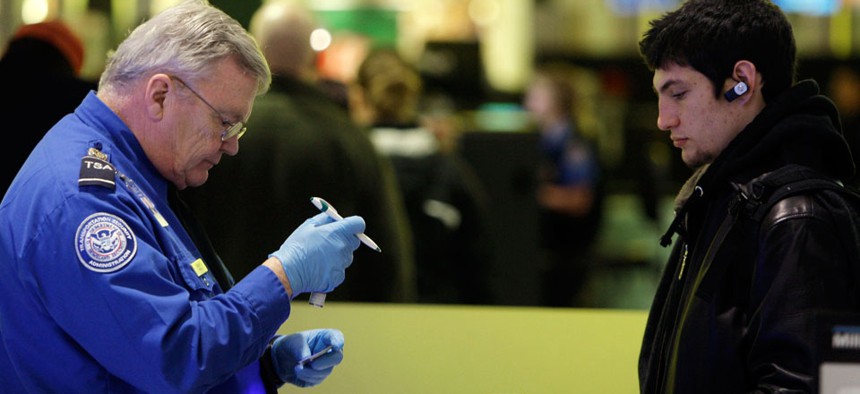
Rob Carr/AP file photo
TSA's Behavior Detection Procedure Is Not a Good Way to Spot Terrorists
Program performs 'the same as or slightly better than chance.'
A new report from the Government Accountability Office concerning Transportation Security Administration screening procedures has found one aspect of passenger screening to be "the same as or slightly better than chance." The report focuses on the administration's S.P.O.T. program (Screening of Passengers by Observation Techniques) which involves engaging suspicious passengers in conversation to figure out if they're planning an attack.
The program current places 3,000 behavior detection officers at more than 170 airports in the country. It also costs around $200 million per year, meaning that since 2007 at least $1 billion has been spent or, if the report is anything to go by, wasted on it. The report also calls into question a 2011 study by the Homeland Security Department -- TSA's parent organization -- which the GAO said used "unreliable data."
Leading Republicans and Democrats on the House Homeland Security Committee expressed concern over the report. Committee Chair and Texas Representative Mike McCaul said that despite the perceived value of investing in aviation security, "we can only support programs that are proven effective," while committee member said that the report "displays what I have been saying for years – that TSA’s Screening of Passengers by Observation Techniques program is fundamentally flawed."






